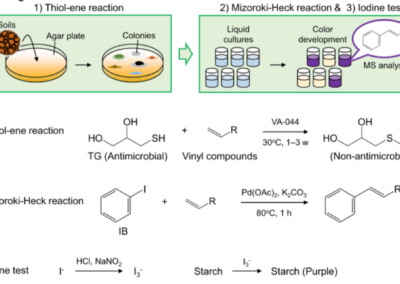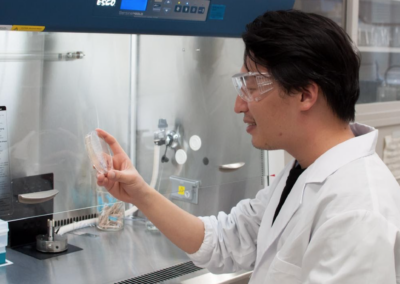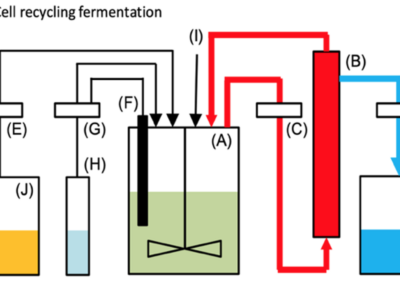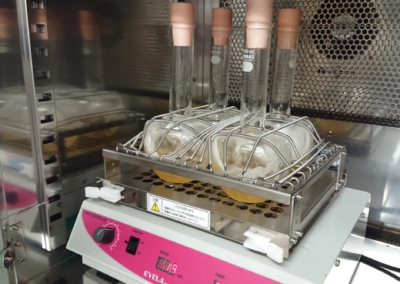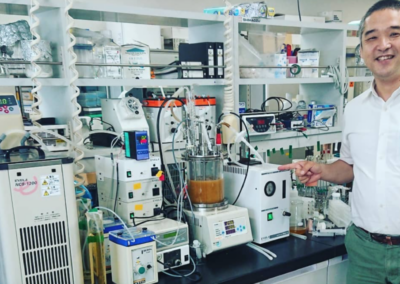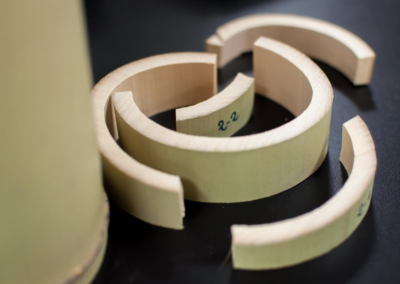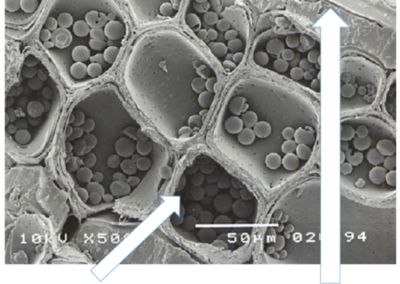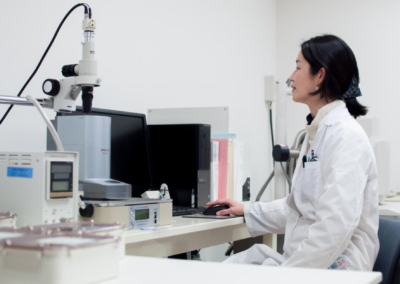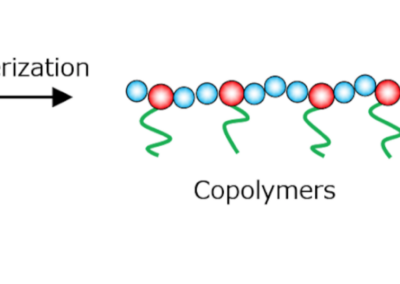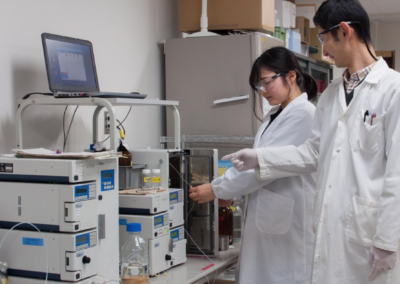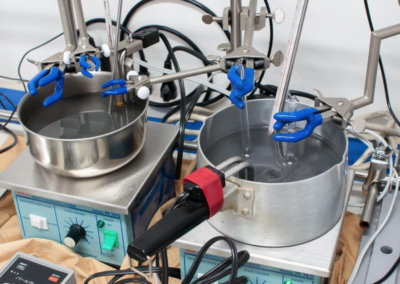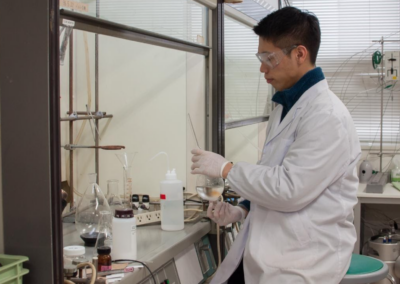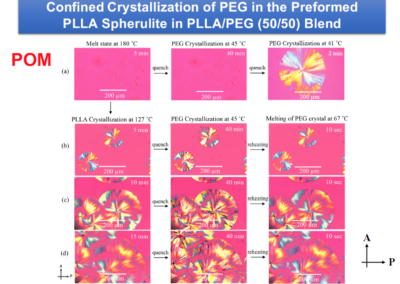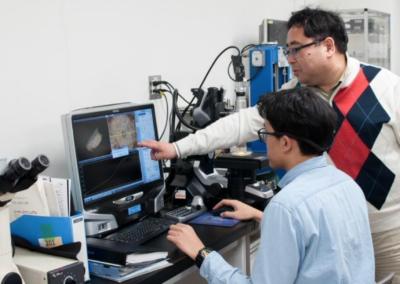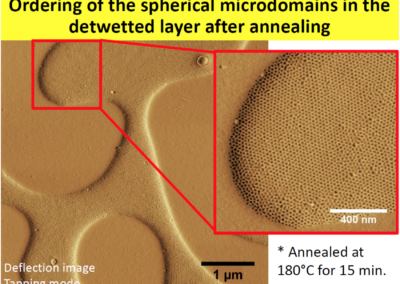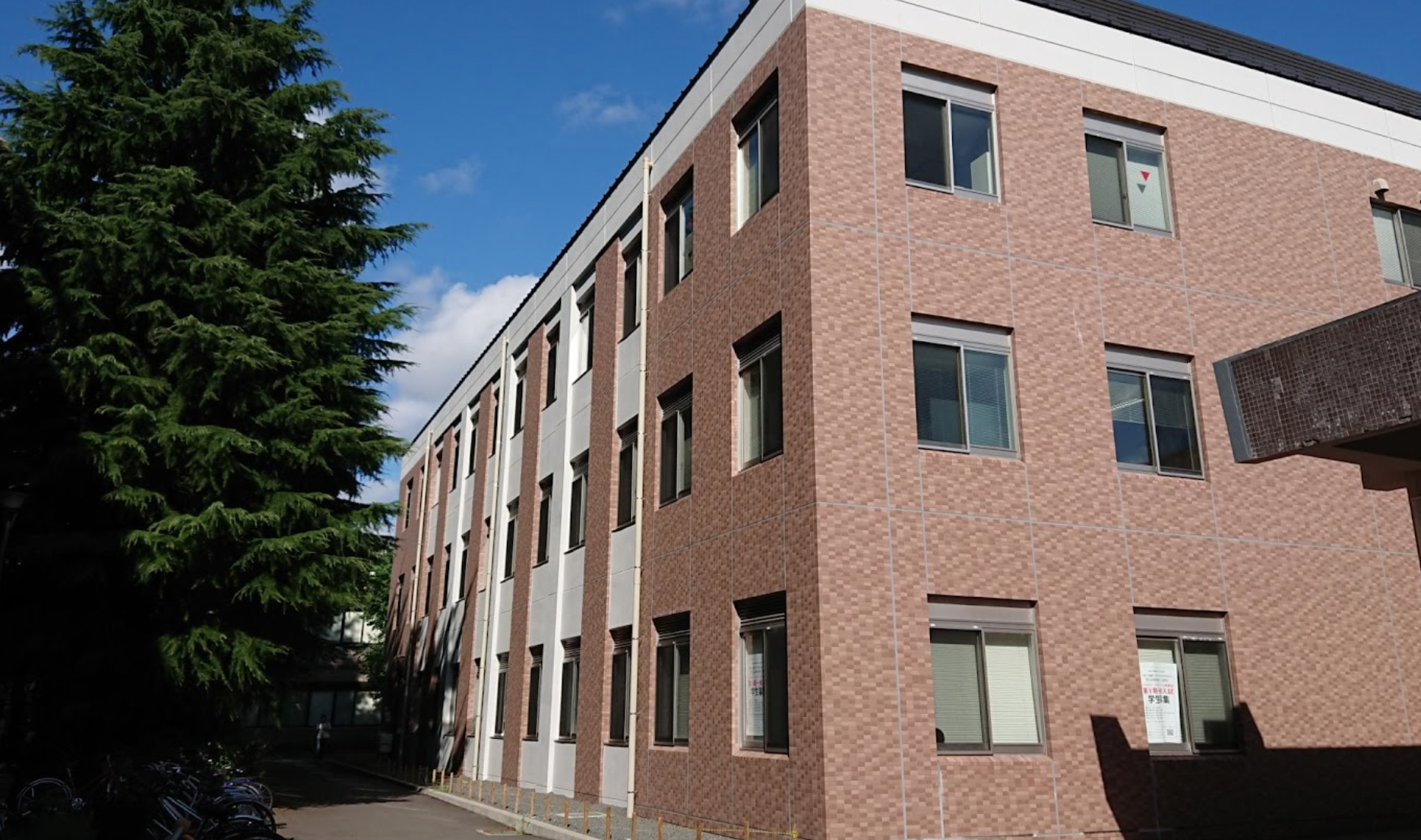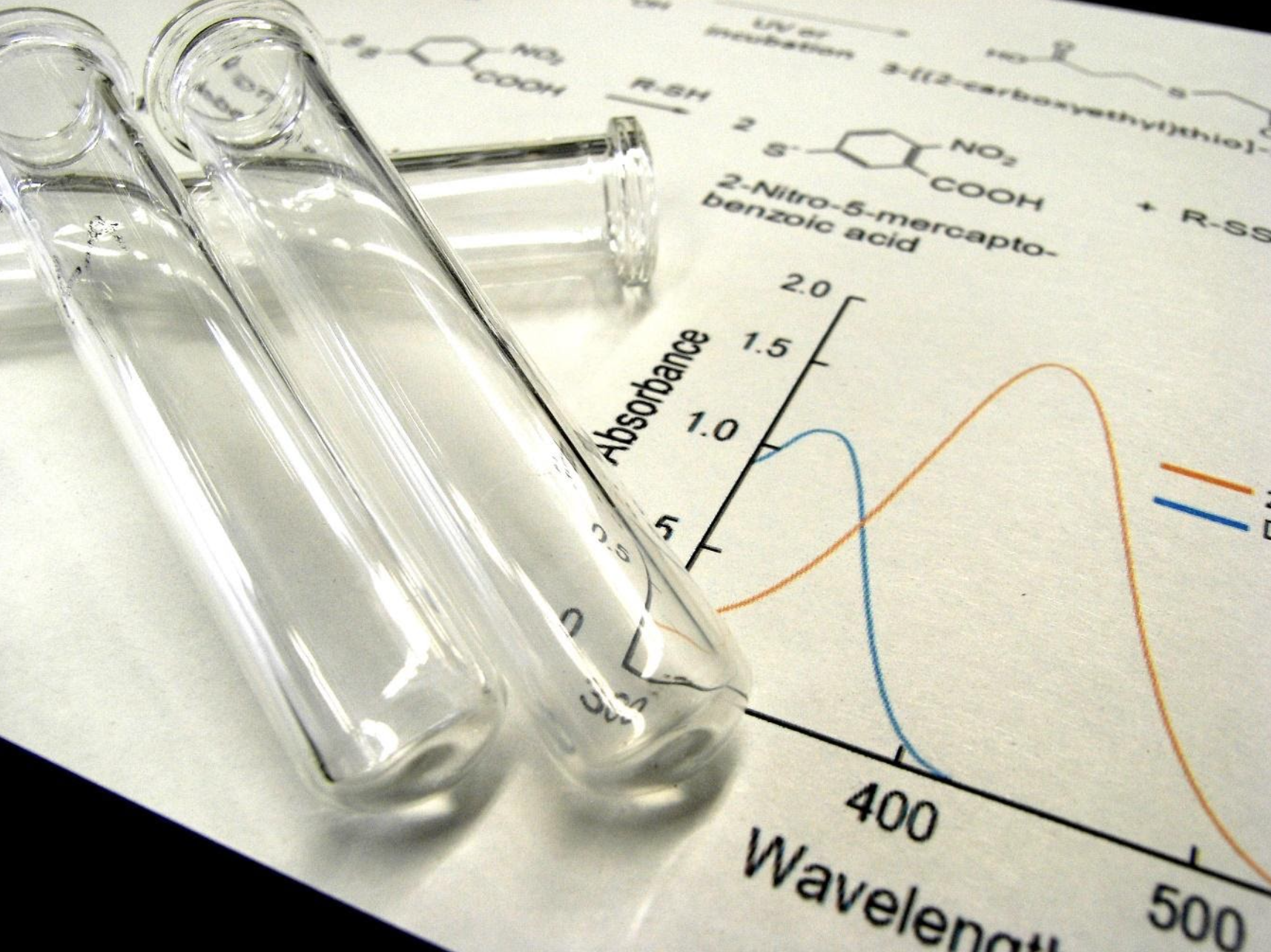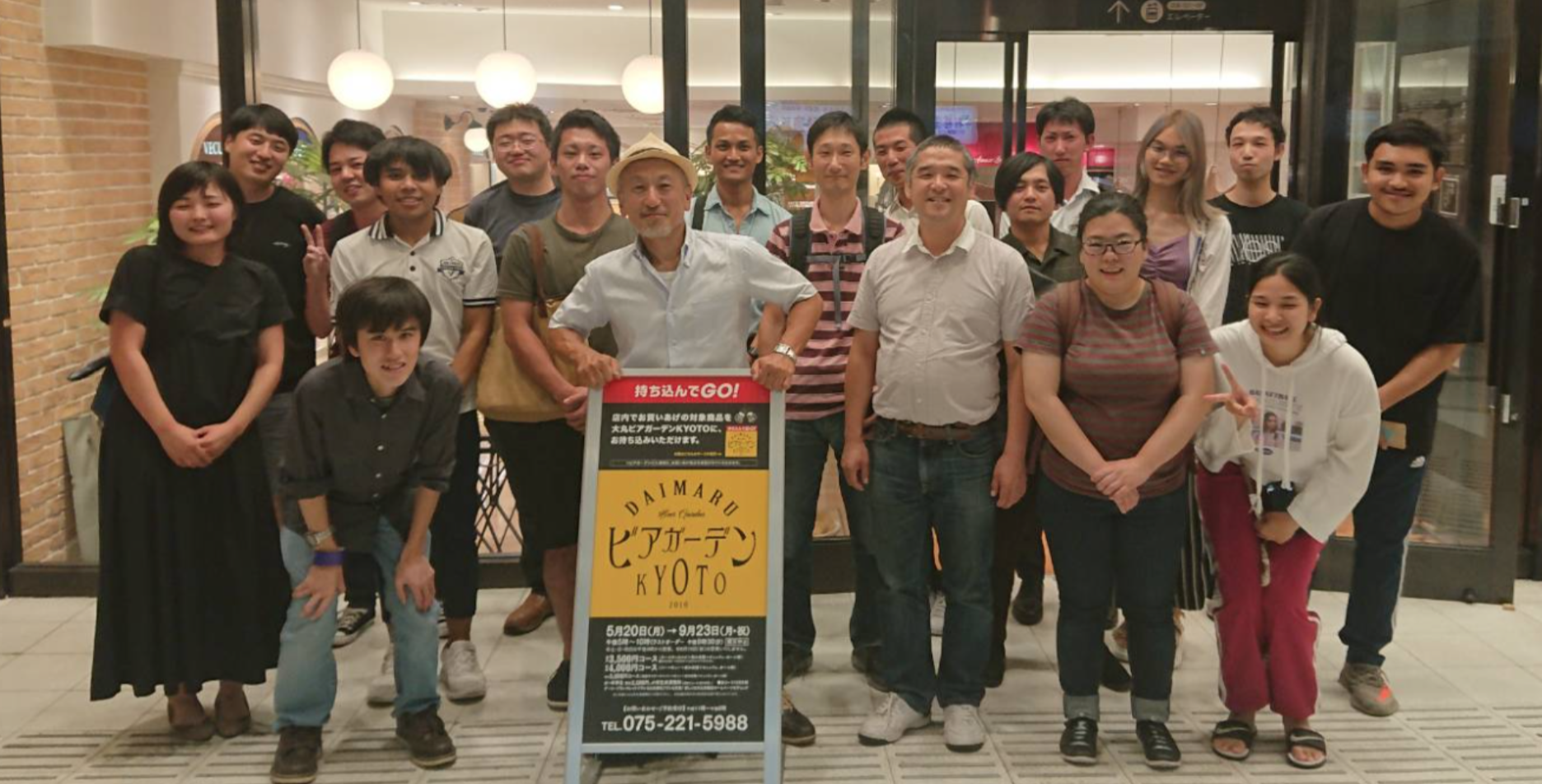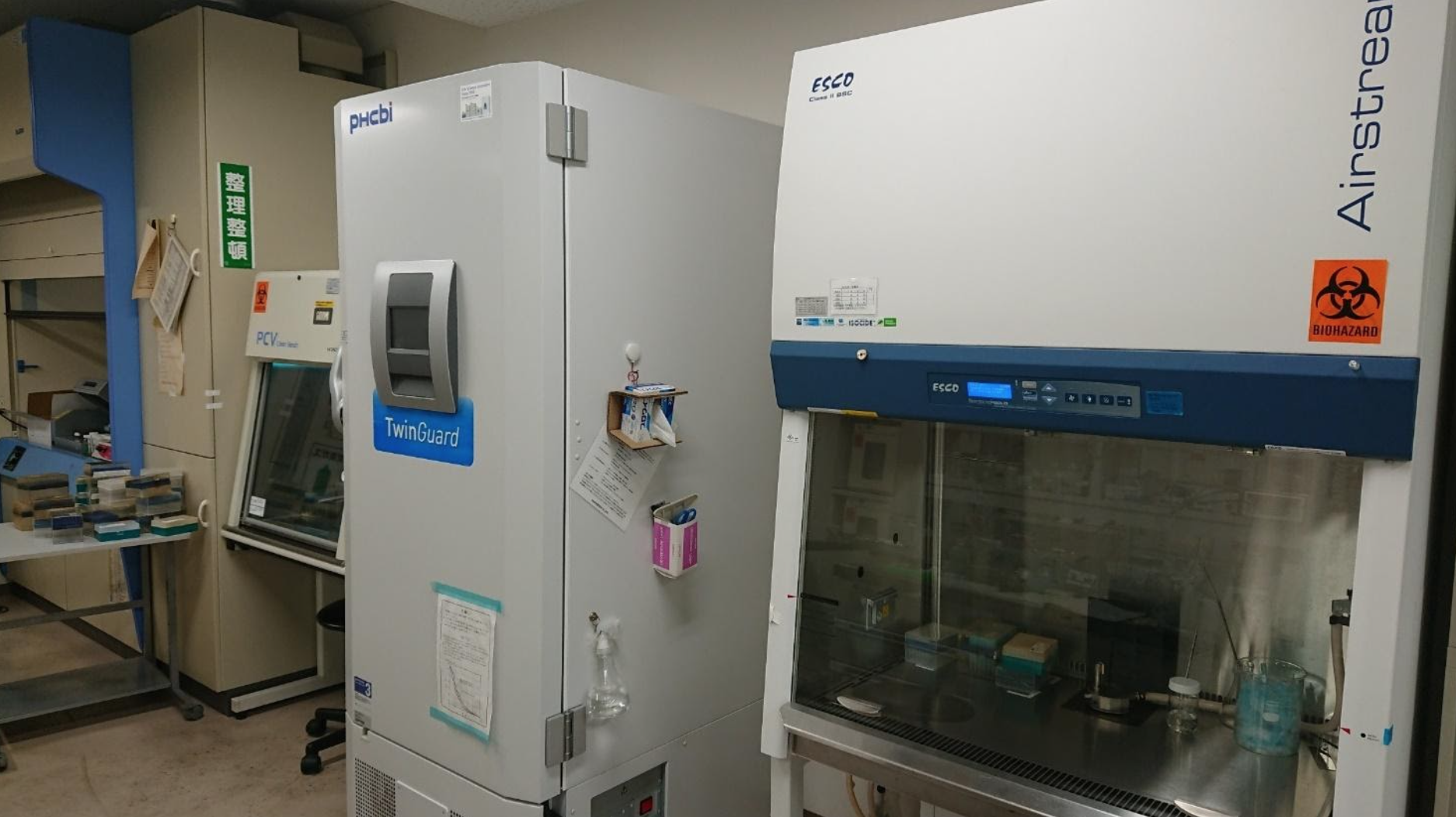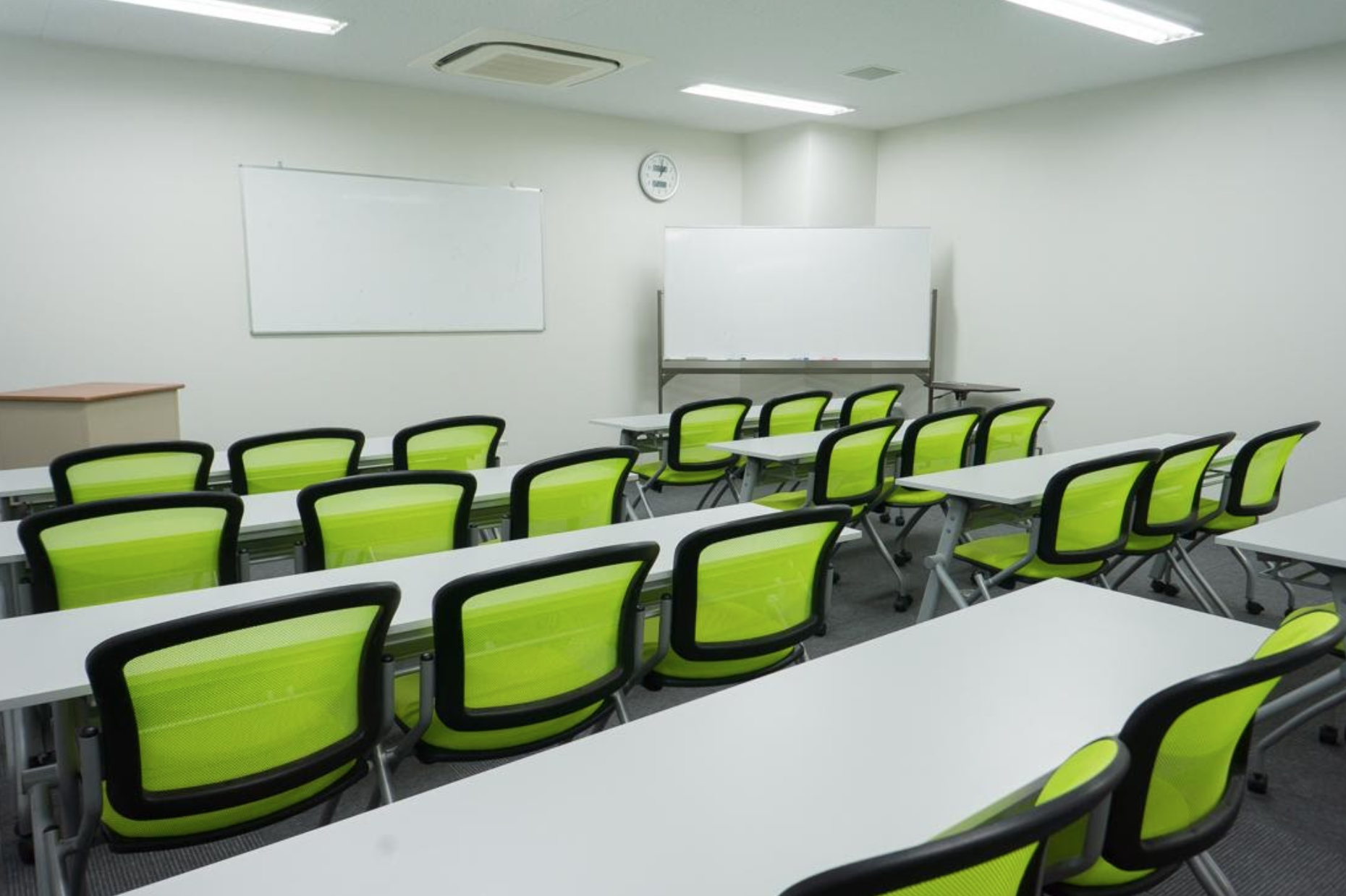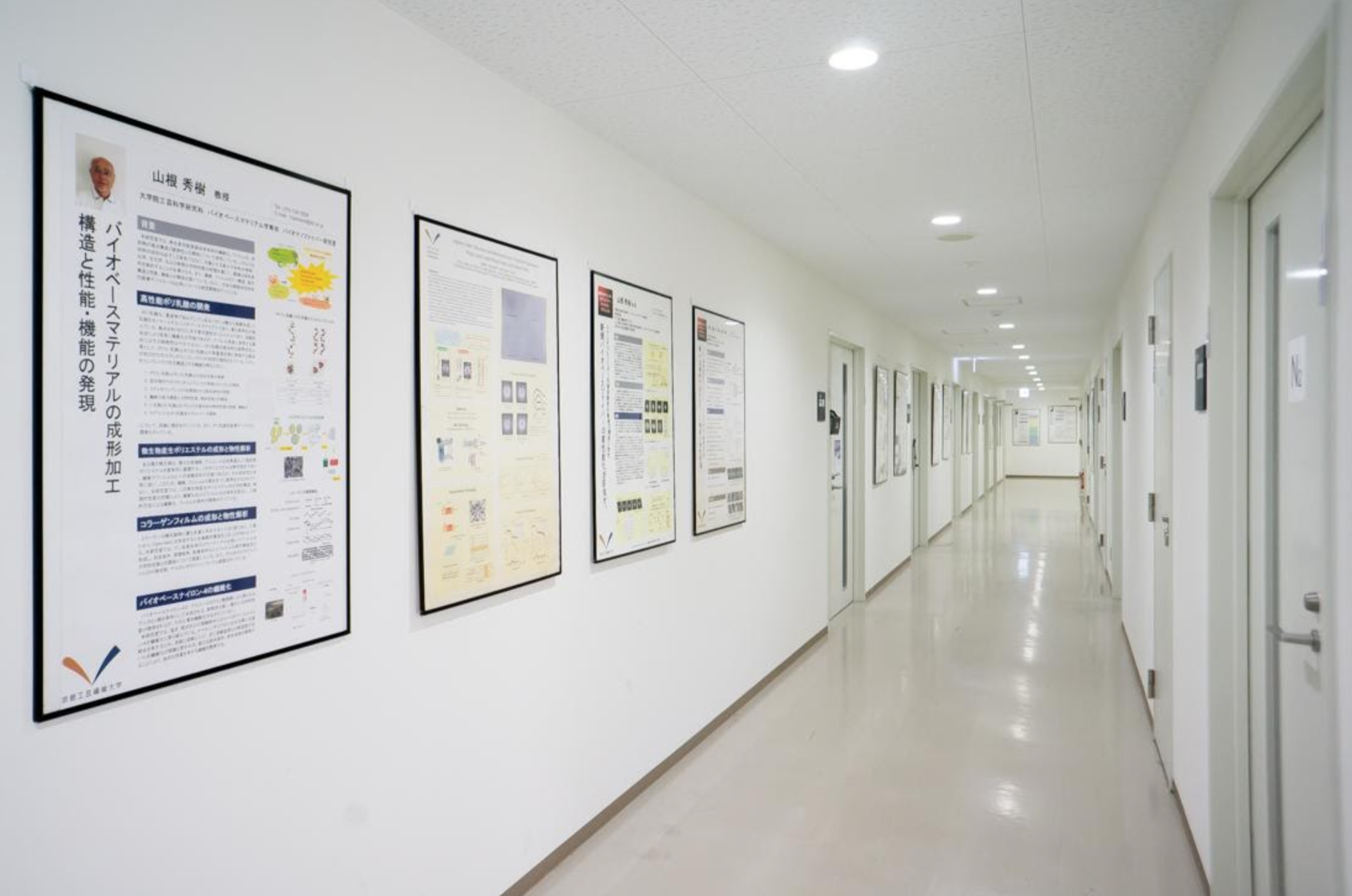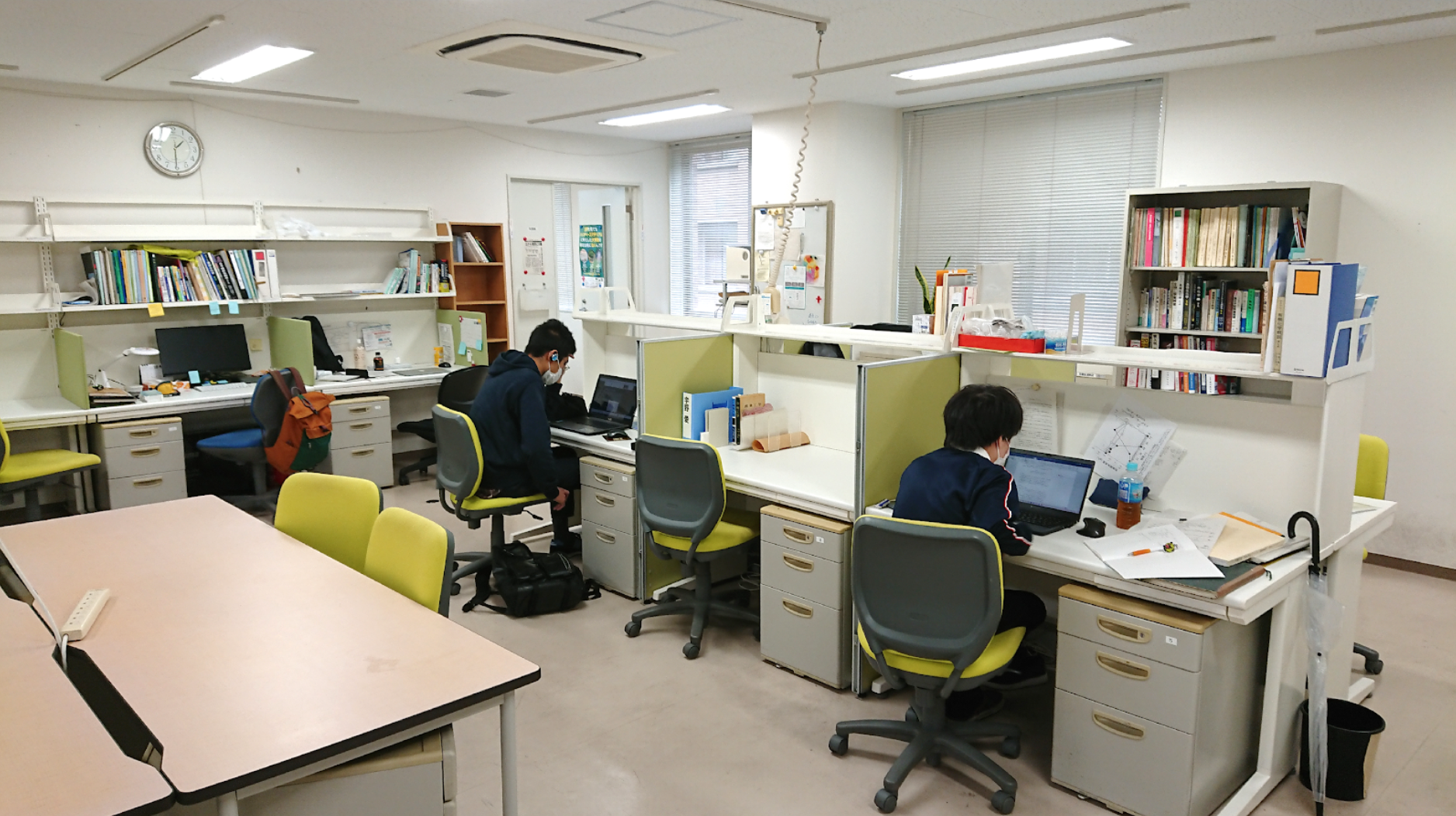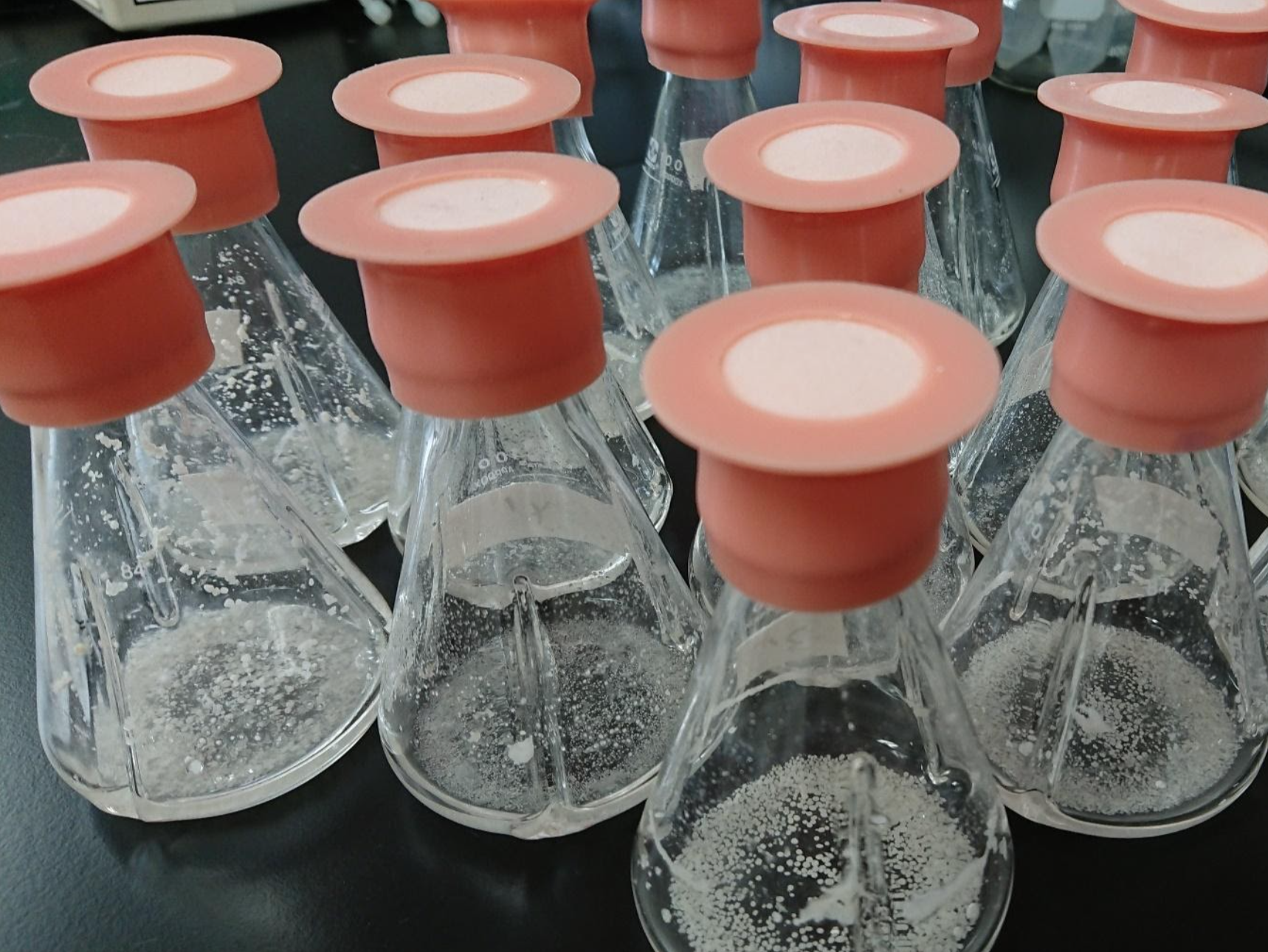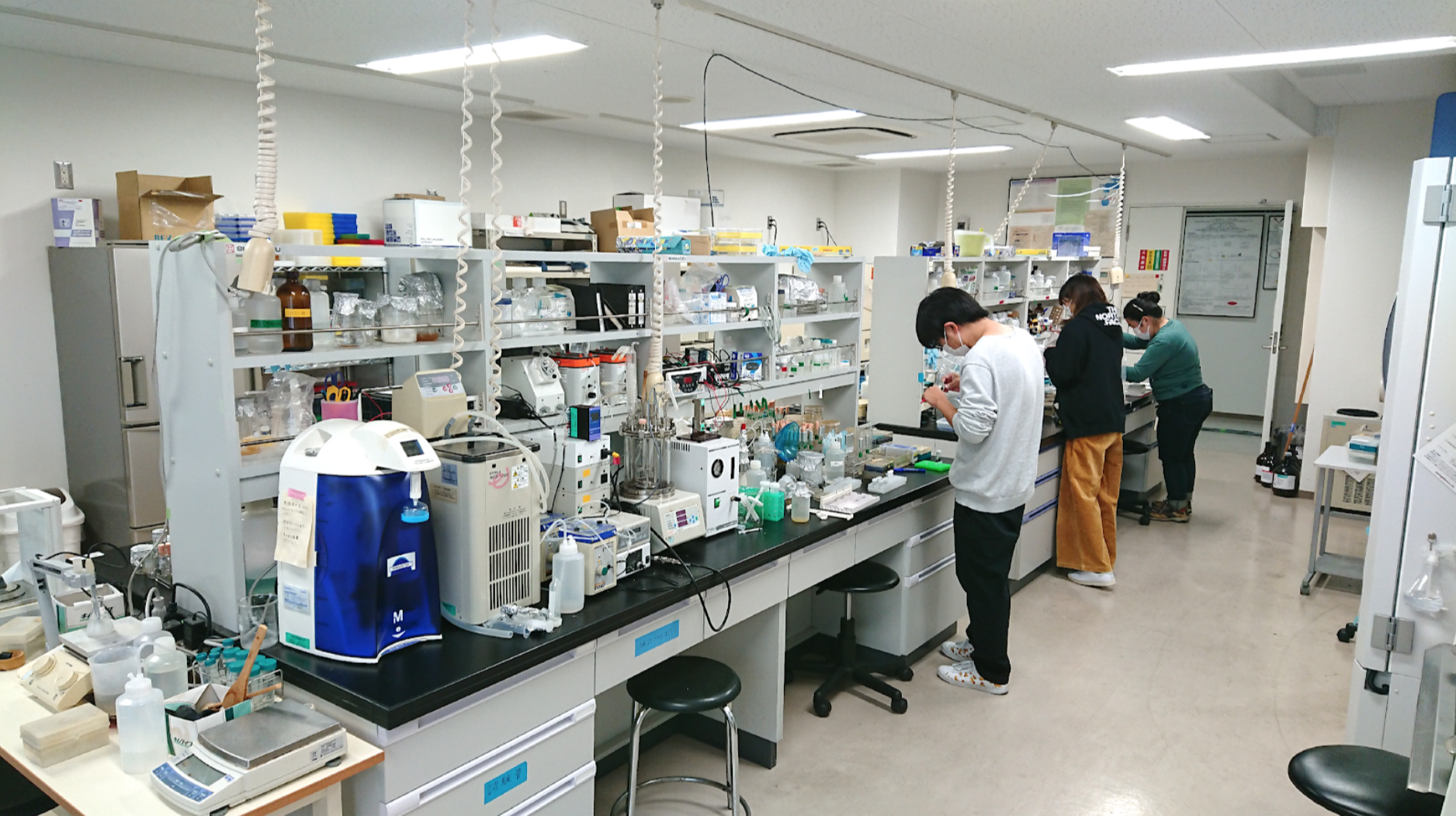The following projects are being offered by KIT researchers next Summer
1. Screening and identification of vinyl bio-monomers produced by novel fungal isolates (Prof. Aso)
To generate bioplastics with more diverse physical properties, bio-derived monomers with different functionalities are required. Vinyl monomers represent valuable polymer building-blocks; however, the available diversity of vinyl bio-monomers is currently quite limited. This project will focus on bioprospecting for and identifying new natural products with vinyl functional groups that may in turn be used to produce novel bioplastics. The specific focus will be on discovering different, higher molecular weight itaconic acid (IA) derivatives. A facile method for high-throughput screening and discovery of vinyl bio-monomers was recently developed by Prof. Aso. The assay, which is based on the Heck reaction (a coupling reaction between a haloalkane and an alkene that occurs under alkaline conditions in the presence of a palladium catalyst) followed by an iodine test, has already been used to successfully isolate fungal IA producers from soil. Here, the method will be optimized and applied to additional environmental samples to isolate novel fungal strains capable of producing other, diverse IA derivatives. Following isolation, structures will be characterized by NMR analysis and bioactivities will be determined.
2. Bioprocess development for direct production of bio-monomers from biomass (Prof. Aso)
Once new fungal strains are isolated, bioprocess development will be needed to optimize the productivity and performance of novel, vinyl bio-monomer producing fungi. As an initial approach, fed-batch cultivation in a membrane bioreactor will be explored. Meanwhile, effective methods for downstream separation of the synthesized vinyl bio-monomers will also be required. Prof. Aso and his team recently developed a membrane bioreactor process for semi-continuous production of D-lactic acid from cellobiose using cell recycle by ultrafiltration. This same process will be adapted for use with novel fungal isolates in order to optimize the bioproduction of new IA derivatives from biomass-derived sugars.
3. Nanostructural characterization of bamboo cell walls and exploring new biomaterials from bamboo (Profs. Okahisa and Sakurai)
Bamboo is a sustainable and economically important raw material in Japan, as well as throughout much of Asia. While bamboo has excellent mechanical properties (e.g., flexibility and dynamic performance), these are highly dependent on age. While only bamboo culms 3-5 years in age are used in current materials applications, younger and/or older materials may also be well-suited for other, as yet unexplored uses. While this project focuses on the latter in the long-term, the immediate goal is to elucidate the causes and effects of age-dependent variation of cell wall components (i.e., cellulose, hemicellulose, lignin) in bamboo culms to better understand their role and influence on mechanical properties. Working with Profs. Okahisa and Sakurai, students will investigate the development of detailed structure-function and chemical characterizations of bamboo as a function of age and explore the use of bamboo tissues for new material applications. Rheological characterization (e.g., using time-temperature superposition) will be performed on materials produced via accelerated aging tests in order to construct viscoelastic models and predict material performance.
4. Development of novel silk-based biomaterials (Prof. Okahisa)
Silk fibroin is a fibrous protein that forms in filaments in silk produced by Bombyx mori (silk worm). In particular, silk fibroin is well-suited for and has been used extensively in biomedical applications, including silk sutures for wound healing, among others. Prof. Okahisa and her team recently succeeded in preparing a non-regenerated silk fibroin nanofiber film (FNF) from silk cocoon via a simple water-grinding treatment in a never-dried state. This simple process opens the door to new possibilities for the development of novel silk films and nanomaterials. In this project, students will investigate the development of such novel biomaterials using fibroin nanofibers.
5. Synthesis of new biopolymers using bio-monomers (Profs. Tanaka and Aso)
Engineered microbes producing monomers such as diols and dicarboxylic acids will be constructed and cultivated in optimized bioprocesses to yield high levels of bio-monomers. Newly produced bio-monomers will then be used to synthesize new types of biopolymers. Once synthesized, properties of the resulting biopolymers will also be extensively characterized in order to identify promising end-use applications. Biopolymers will be used to generate different films. Films will be characterized for different physical and biological properties, including tensile and optical properties, as well as biocompatibility. Such films may be useful as coatings or in packaging applications, for example.
6. Protecting-group-free synthesis of glycopolymers (Prof. Tanaka)
Glycopolymers, which consist of synthetic polymers with pendant saccharides, have attracted considerable attention as functional polymer materials, especially for biomedical applications. Generally, the synthesis of glycopolymers is quite laborious and involves multistep synthesis methods comprised of sequential protection and deprotection steps. Accordingly, the development of simpler, more efficient synthetic methods for preparing glycopolymers from free saccharides would be advantageous. Working with Prof. Tanaka, new methods for the protecting-group-free synthesis of glyco-monomers and -polymers will be developed via direct anomeric activation of free saccharides. In addition, the bioactive properties of the resulting glycopolymers will be investigated. Students will characterize polymers using mass spectroscopy and scanning electron microscopy.
7. Control of poly(L-lactic acid) crystallization in poly(L-lactic acid) / poly(ethylene glycol) blends (Prof. Sakurai)
Confined crystallization of the poly(ethylene glycol) (PEG) in poly(L-lactic acid) (PLLA) spherulite in a PLLA/PEG (50/50) blend specimen will be studied by simultaneous small- and wide-angle X-ray scattering (SAXS/WAXS) measurements and by the differential scanning calorimetry (DSC) and the polarized optical microscopy (POM), where the blend specimen is subjected to the isothermal crystallization at 45.0 ◦C for PEG crystallization in the presence of preformed PLLA crystalline lamellae formed during the previous isothermal crystallization at 127.0 oC for 5–20 min. The WAXS is aimed at observing crystalline reflection peaks for the blend which will be compared with the neat PEG, while the SAXS is aimed at confirming the confined crystallization of PEG in the amorphous layer sandwiched by the preformed PLLA crystalline lamellae by following the changes in the SAXS profile for the blend specimen along with the PEG crystallization in the preformed PLLA spherulite. The DSC is aimed at studying the crystallization kinetics of the confined PEG crystallization, while the POM is aimed at observing the formation process of the spherulites or other higher-order structures upon the confined PEG crystallization.
8. Microphase separation in block copolymer monolayer film (Prof. Sakurai)
The spontaneous dewetting of a spin-coated ultra-thin film of a sphere-forming block copolymer (BCP) upon thermal annealing will be studied by using atomic force microscope (AFM). Based on our previous study (briefly mentioned below), we will further study the formation of the “terrace” structure for the bilayer of sphere-forming BCP. We have already observed that the dewetting resulted in the formation of a plateau-shaped islands with a constant thickness consistent with the thickness of a monolayer, in which the spherical microdomains are regularly ordered two-dimensionally in a deformed hexagonal lattice. Thus, the spontaneous dewetting was ascribed to the mismatching of the initial spin-coated film thickness with respect to the monolayer thickness. Although the dewetting of sphere-forming BCP is considered to be deterministic as compared to the cases of lamella- and cylinder-forming BCPs, no such an article explicitly reporting formation of the dewetted monolayer island has been published before. Note that for the cylinder and lamella cases, they can avoid incommensuration in thickness by attaining perpendicular orientation without dewetting. We further quantitatively examined the ordering regularity of spherical microdomains in the dewetted monolayer island to clarify the effect of confinement on sphere ordering. The degree of deformation of the hexagonal lattice was found to have an increasing tendency as a function of the degree of the deformation of the dewetted island (the island shape), irrespective of the size of the island. Namely, the island having almost round shape exhibits a well-ordered arrangement of the spherical microdomains in a regular hexagonal lattice. Another notable finding is that the regular ordering of the spherical microdomains was found to be spoiled in the vicinity of the edge of the island. In other words, the spherical microdomains were well-ordered in a hexagonal lattice far from the edge of the island, while they were not regularly ordered in the vicinity of the edge, which may be due to mismatch between the curvature of the island’s perimeter and the polygonal shape of a grain of ordered spheres.
